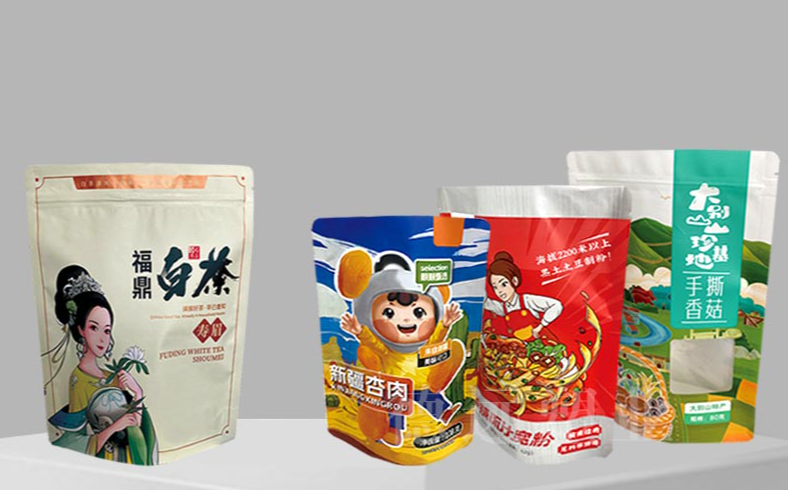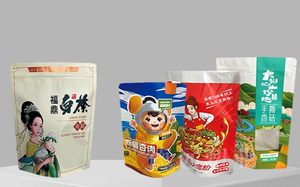
Food packaging bag inspection method Inspection and audit service for factories
Food packaging bags serve as the direct guarantee for food safety, and their quality control is of vital importance during the inspection, factory verification, and product inspection and certification processes. This article will systematically elaborate on the inspection standards, testing methods, and quality certification requirements for food packaging bags, providing professional technical guidance for industry practitioners.
I. Inspection and Certification Method for Food Packaging Bags
(1) Appearance Quality Inspection Certification
Surface Integrity Inspection
Testing method: Observe the reflected light on the bag surface under a 40W fluorescent lamp.
Certification standard: No significant scratches, pinholes or "etched" effects.
Defect handling: When a wire drawing defect is detected, it is necessary to investigate the cleanliness and operating condition of the guide rollers.
Flatness certification inspection
Testing method: Take samples for a "air-to-ground" natural drop test.
Certification standard: No bending, warping or inward arching shall occur after landing.
Influencing factors: bag-making temperature, material structure, and uniformity of thickness
Transparency inspection certification
Testing method: Observe the blank area through an indirect light source.
Certification standard: No defects such as pinholes, rings, or foggy areas.
Quality control points: color of the adhesive liquid, transparency of the substrate, material selection
(2) Sealing Performance Inspection Certification
Sealing Integrity Test
Dye test method: Use surfactants to detect the degree of penetration.
Mechanical testing method: Use a special iron ruler to push and press the sealing part.
Certification standard: No detachment, no perforation, and maintain complete sealing and correct dimensions.
Sealing strength certification
Instrumental testing method: Quantitative detection is carried out using a universal material testing instrument.
Manual testing method: Use both index fingers to tear the material in a reverse and uniform manner.
Certification standard: Sealing strength reaches 22 - 34 N per 15 mm.
(3) Completeness inspection certification
Leakage detection certification
Color penetrant method: Suitable for inspection of vacuum packaging bags
Water-based depressurization method: Used for inspection of inflatable packaging bags
Certification standard: No bubbles overflow, no dye seepage
Strength performance certification
Pressure resistance test: Apply the specified weight and maintain it for 1 minute.
Tensile strength test: Inflate to the specified pressure and maintain for 30 minutes.
Certification requirements: The bursting strength of the commercial bags should be ≥ 0.01 MPa.
II. Inspection Items and Hygiene Standard Certification
(1) Basic Quality Certification
Appearance Defect Inspection
Certification standard: No bubbles, perforations, water marks, fish eyes or any other defects.
Inspection requirements: The surface should be smooth and free from any contamination.
Specification accuracy certification
Test items: Width, length, thickness deviation
Certification standard: Within the specified tolerance range
(2) Physical and mechanical performance certification
Mechanical property testing
Tensile strength: Reflects the ability to resist tension.
Tensile elongation: Reflects the ductility property
Importance of certification: To prevent cracking or damage during use
Special performance certification
Gas barrier property: Gas permeation rate measurement
Environmental adaptability: Heat resistance, cold resistance, resistance to media
Usage reliability: Seal peeling force, pressure resistance drop test capability
(3) Health and Safety Certification
Health Performance Inspection
Evaporation residue: Detects the precipitated substances from liquids such as vinegar, alcohol, and oil.
Potassium permanganate consumption: Reflects the amount of organic matter released.
Heavy metal content: Ensure it does not exceed the limit.
Health standards basis
GB 9683-1988 "Hygiene Standards for Composite Food Packaging Bags"
GB 13113-1994 Hygiene Standard for Polyester Molded Products
Relevant industry standard certification requirements
(4) Environmental Performance Certification
Degradation Performance Test
Light degradation type: Degradation ability under low light conditions
Biodegradable type: Microbial decomposition performance
Environmental degradation type: Comprehensive degradation effect based on environmental factors
Environmental protection certification standards
Degradation performance assessment: Breakage, differentiation, and degradation degree
Environmental Acceptability: The final formed debris is accepted by the environment.
III. Special Certification for Composite Packaging Bags
(1) Appearance Quality Certification
Surface Quality Inspection
Certification standard: Smooth surface without scratches, burns or bubbles
Sealing quality: The seal is flat and there is no air leakage.
Structural integrity: No cracks, pores, or delamination.
Cleanliness certification
Inspection requirements: Free from impurities, foreign substances and oil stains.
Soaking test: No odor, no strange smell, no turbidity, no color fading
(2) Industry Standard Certification
Specialized Standards Basis
BB/T 0003-94 "High-Temperature Sterilization Film and Bag"
GB/T 0004-1998 "Resistant to Boiling Composite Sheets and Bags"
QB/T 1871-93 Bidirectional Stretch Nylon Composite Film and Bag
Special-purpose certification
Pickled vegetable packaging: QB/T 2197-96 Special Standard
High-temperature steaming: Certification of high-temperature resistance performance
Specific food: Certification of special composite film bags
IV. Inspection and Certification Process Management
(1) Inspection Environment Certification
Lighting Condition Certification
Standard light source: 40W fluorescent lamp
Observation distance: Suitable for visual inspection
Environmental requirement: No interference reflection
Testing equipment certification
Instrument calibration: Regular inspection and maintenance
Measuring instrument accuracy: Meets the testing requirements
Record complete: The test data is traceable.
(2) Sampling Inspection Plan
Sampling Criteria
Sampling ratio: Determined by batch size
Sample quantity: Representative
Sampling method: Random sampling principle
Inspection frequency
First article inspection: Before mass production
Process inspection: During the production process
Factory inspection: Final inspection before delivery
(3) Quality Certification
Certification standards for qualification
Appearance quality: Meets the standard requirements
Physical properties: Meet the specified standards
Health and safety: Passed all tests
Non-conformity handling
Serious defect: Immediate rejection
Minor defect: Restricted use
Reform requirements: Clearly define improvement measures
V. Continuous Improvement and Certification Maintenance
(1) Quality Record Certification Inspection record
Test data: Complete and accurate
Problem record: Detailed and clear
Reform tracking: Closed-loop management
Certification document
Inspection report: Issued in accordance with standards
Certificate of Compliance: Valid within the specified period
Source information: Fully documented and verifiable
(2) System Certification Requirements
Quality Management System
Process control: Improved and effective
Continuous improvement: Sound mechanism
Customer Satisfaction: Goal-Oriented
Industry Certification
Health Permit: Valid and Complete
Quality certification: Obtained relevant certification
Environmental certification: Compliant with environmental requirements
分享这个商品

Food packaging bag inspection method Inspection and audit service for
Food packaging bags, as the direct guarantee of food safety, their quality control is of vital importance during the inspection process.
